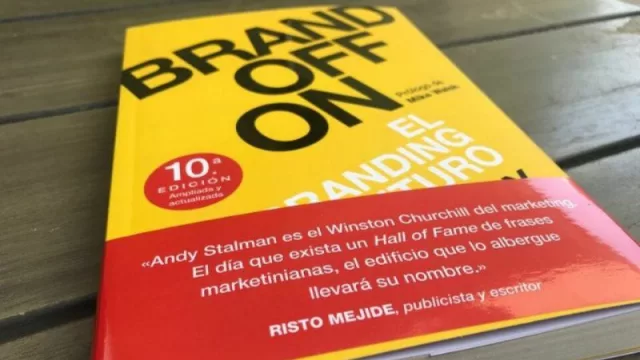Why has brand management become even more demanding? (Or should we actually say business).
Difficulties or opportunities, depending on how you look at them:
The new rules:
-
Crossing, phigitality, co-creation, associativity, expansion of experience, thematization, hyper-conceptualization, need for limited, personalized, temporary products, brand museology, environmental and human sustainability, integrality (not just reputation), daily dynamics, playful activity, emotional value, integral coherence in everything done.
These are the new rules, which means that now the "management variables" cannot only be hard metrics or cash flow, but they must have a holistic, quali-quantum view, short-term, medium-term, long-term.
Common mistakes when executing Branding:
-
Lack of understanding of the target audience: Not fully understanding the needs, desires, and behaviors of the target audience can lead to ineffective branding strategies.
-
Message inconsistency: Transmitting contradictory or inconsistent messages can confuse consumers and weaken the brand's perception.
-
Lack of differentiation: Not highlighting and communicating the unique and distinctive attributes of the brand can cause it to get lost in the market saturation.
-
Lack of authenticity: Being perceived as fake or inauthentic can damage the brand's reputation and trust among consumers.
Mistakes due to lack of investment, vision, and amplification:
-
Low investment in market research: Not allocating sufficient resources to market research can result in poorly founded branding strategies disconnected from market needs.
-
Low budget for Marketing and Advertising: Limiting the budget for marketing and advertising can restrict the visibility and reach of the brand, making it difficult to position and recognize.
-
Lack of innovation and adaptation: Failing to adapt to market changes and trends can make the brand obsolete and lose relevance over time.
-
Little attention to customer service: Neglecting customer service can lead to negative experiences that affect the brand's reputation and loyalty.
-
Absence of Integrated Communication Strategies: Failing to effectively integrate communication strategies can create disconnection and confusion among the brand's messages.
-
Lack of measurement and evaluation of results: Not measuring and evaluating the impact of branding strategies can hinder the identification of areas for improvement and optimization.
Avoiding these mistakes is essential to build and maintain a solid and successful brand in a competitive and ever-changing market.
Review of the Book "Brandoffon: The Branding of the Future" by Andy Stalman
-
Humanization of brands: Stalman emphasizes the importance of humanizing brand behavior to authentically connect with customers today.
-
Accessibility and clarity: The book stands out for its clear and accessible style, allowing any reader to understand the fundamental concepts of branding without complicated technical terms.
-
New opportunity in the online world: Stalman introduces the concept of "Pangea" as a new opportunity for online businesses, highlighting the importance of being present in both the digital and physical worlds.
-
Future behaviors of brands and consumers: The author explores the possible future behaviors of successful brands and consumers, providing insightful perspectives on the evolution of branding.
-
Inspiration and revelation: "Brandoffon" is an inspiring work that offers innovative ideas and fresh perspectives on the future of branding and its impact on the business world.
But also, what are the things that are most confused when doing Branding?
-
The first thing that is very noticeable today is to believe that everything is digital, video, or online media.
-
The second consequence is that Branding today is Crossing (all interconnected, interrelated, and feedbacked, the greater the ability to "cross" the on-off experience and weave a network or connective fabric, the greater the capacity of someone who claims to be an expert in Branding.
-
The experience, in turn, is becoming more detailed, profound, amplified, conceptualized, and themed.
-
Not understanding this today is to do very little. Excuses for not doing are self-deceptions to not invest, not finance, not inject capital, or simply not do anything new, out of fear or to maintain the status quo.
Finally, another of the most common mistakes is:
Lack of deep knowledge of the target audience.
-
Good branding is based on a deep understanding of the target audience. This involves understanding the needs, desires, behaviors, and preferences of the ideal customer.
-
Minimization, lack of clear and consistent differentiation:
-
Successful branding differentiates itself clearly and consistently from the competition. This involves highlighting the unique and distinctive aspectsSuccessful branding differentiates itself clearly and consistently from the competition. This involves highlighting the unique and distinctive aspects of the brand that make it memorable and relevant to its audience.
Lastly, good branding involves continuous assessment and adaptation. Brands must constantly be aware of market trends, customer opinions, and changes in the business environment to effectively adjust their branding strategy.
Good branding encompasses everything from clearly defining the brand identity to consistently delivering on promises, through a deep understanding of the target audience and adaptability to changing market conditions. It is a continuous process that requires meticulous attention to every detail to build and maintain a strong and relevant brand in the minds of consumers.












Tu opinión enriquece este artículo: